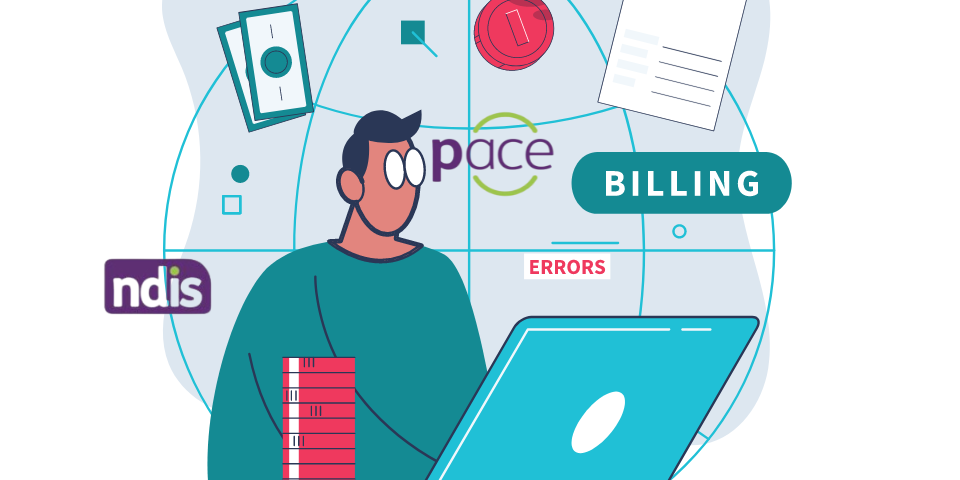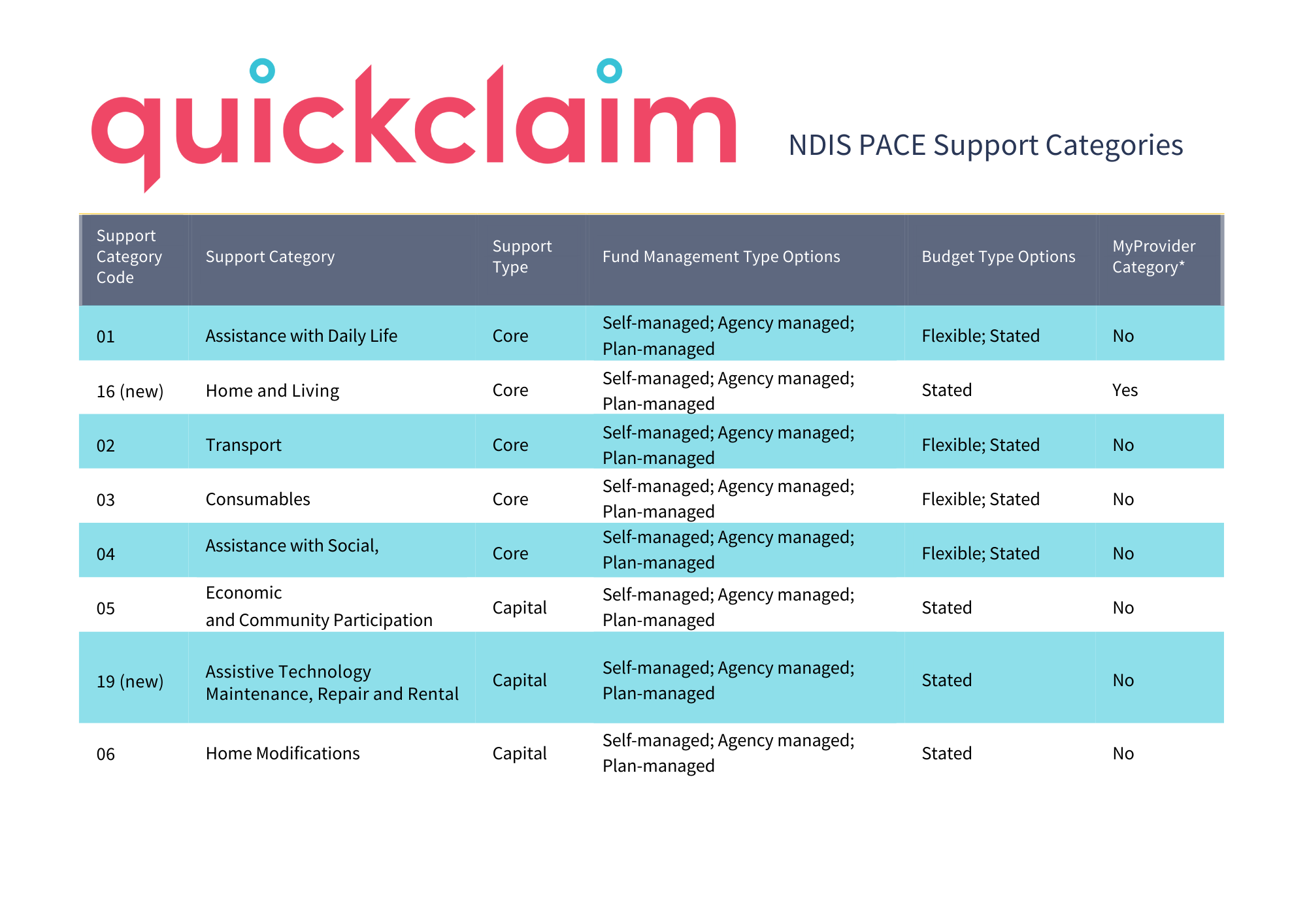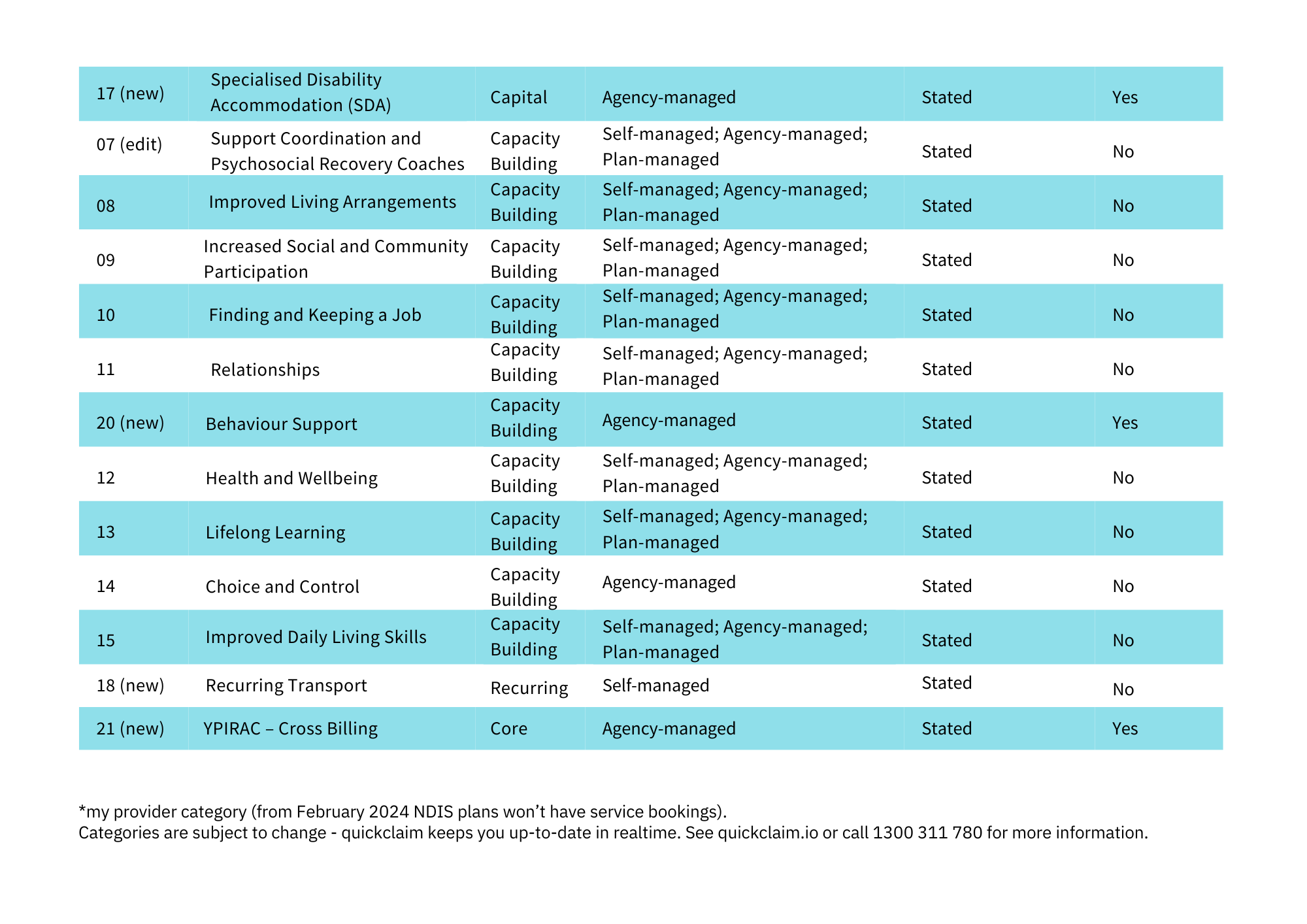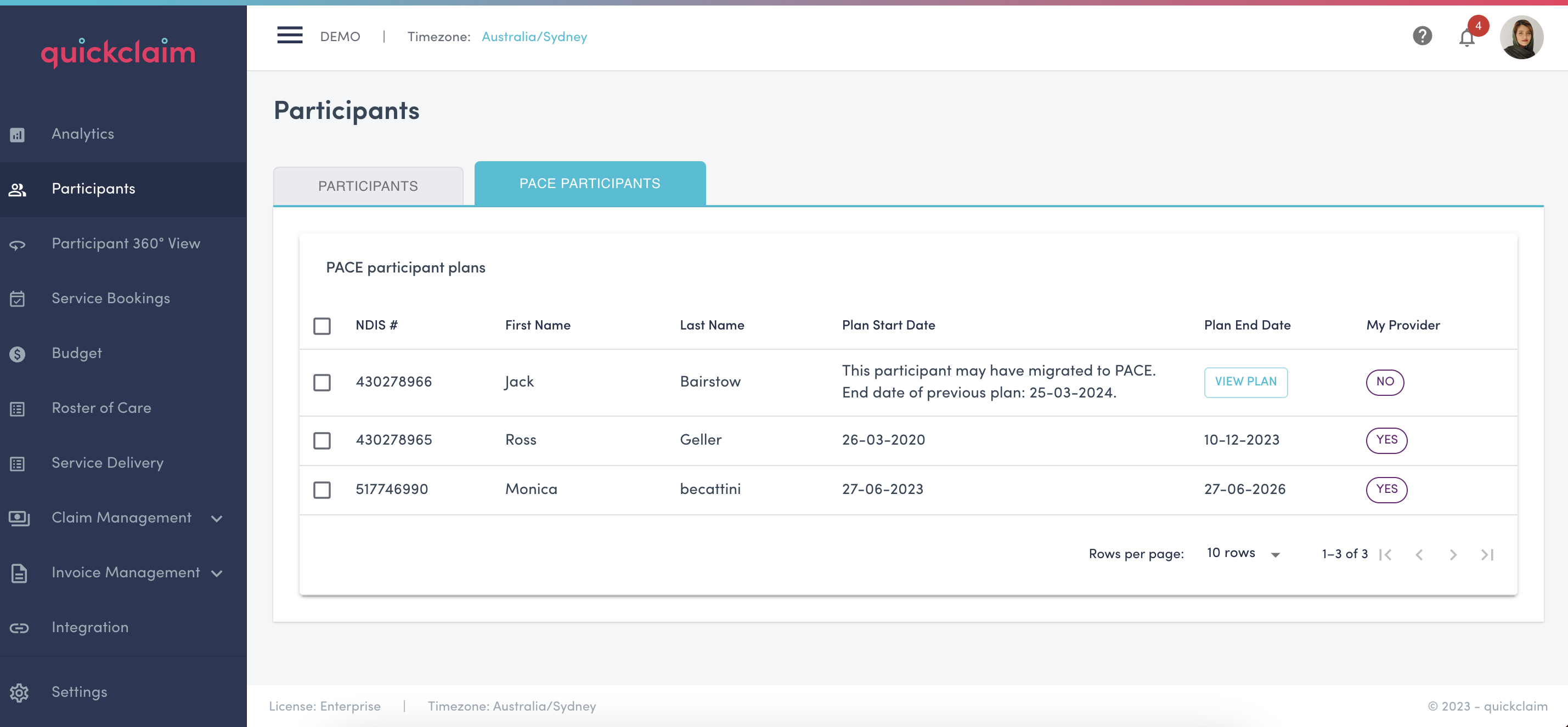
NDIS Claiming with Advanced Automation Solutions – Part 1
February 20, 2024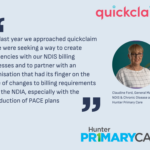
quickclaim and Hunter Primary Care working together to improve NDIS billing efficiencies
April 2, 2024TL;DR:
- NDIA introduced PACE to replace PRODA, aiming for better service.
- Rollout faced challenges despite promises of simplification.
- Issues: incorrect plan categorisation, lack of transition visibility, and provider burdens.
- Participants must endorse providers in PACE, causing delays.
- Providers face financial setbacks and more admin work.
- Transition lacks smoothness, frustrating stakeholders.
- Solutions like quickclaim offer help but challenges remain.
VIDEO: How quickclaim is helping service providers transition to PACE
It's been almost six months since the National Disability Insurance Agency (NDIA) introduced its new computer system, PACE, nationwide. PACE is set to replace the previous system, PRODA, which, despite its flaws, served its purpose.
From March 2024, PRODA ceased accepting client bookings, marking a significant milestone in the transition to PACE. However, the full transition of all clients to PACE could take up to 18 months to complete.
Part of the Participants, Platforms, and Process (3P) Improvement Initiative, PACE aims to enhance the way care organisations, agencies, plan managers, and coordinators serve clients. It's designed to provide clients with better choice and control over their engagements and funding.
Despite the promise of simplifying a complex process, the anticipated improvement in service delivery with PACE has yet to materialise. This prompts a timely check-in to assess the progress of the PACE rollout.
On October 30, 2023, the NDIA introduced PACE alongside a new myNDIS portal after a year-long trial in Tasmania. PACE consolidates participant information, inquiries, plans, and budgets, aiming to facilitate smoother interactions between participants and providers.
Key changes introduced by PACE include modifications to NDIS support types and categories, the endorsement of providers by participants, periodic funding releases, and the introduction of new portals and reporting templates. Other changes include:
- Changes to NDIS support types and support categories (see below)
- Participant-endorsed providers (my providers)
- Release of funding at intervals
- Rollover of funding
- New ‘my NDIS’ participant portal and app
- Participant check ins
- Changes to service bookings
- Bulk payment claims (single claim removal)
- Viewing participant plans
- New 'my NDIS’ provider portal
- Requests for service
- New reporting templates
- Additional information available to providers
- New notifications from the 'my NDIS' provider portal
- Removal of the claiming overlap for plan managers
- Changes to fund management types for some supports
New support types in PACE
In PACE, the Core, Capital, and Capacity Building support types are joined by a new one called Recurring. Six new support categories (below) will be added, and some existing support category names will be changed.
Key changes with PACE
When a participant transitions to PACE, their NDIS plan may look different, because the new support type and support categories may be included.
In practice, this has led to issues being experienced by providers, with the NDIA allocating incorrect categories to clients’ plans - and poor escalation procedures to resolve the problems.
Even before a client transitions to PACE, the lack of visibility when a client moves is causing headaches.
Alliance Community tells us "the biggest pain point is not having visibility of the funds that have been approved from the client"
The NDIS guidelines on knowing when a client has transitioned to PACE states:
Providers will know because:
- error messages will be displayed when they submit a single payment claim request against the current plan period. The error message will indicate the participant has transitioned to the new system and provide advice on how to resolve the issue.
- existing service bookings will automatically be end dated for the previous plan. Providers will be able to see this in the ‘myplace’ provider portal report function.
- they won’t be able to create a service booking for the participant in the ‘myplace’ provider portal.
These processes seem very reactive, preventing the planning of a smooth client transition. It would make more sense to provide advance notice of when a client is transitioning or send a notification when that transition is occurring.
One of the significant shifts with PACE is how providers bill for services received through NDIS funding, requiring participant endorsement before processing any payment. However, concerns have arisen, particularly regarding administrative burdens on coordinators and visibility issues with participants' plans and budgets.
PACE represents a significant shift
"The biggest pain point is not having visibility of the funds that have been approved by the client"
"LACs (Local Area Coordinators) - people who were employed because they were passionate about making a difference in the lives of people with a disability are completely overwhelmed with administrative tasks (especially since PACE in TAS) with little time to spend with any of the hundreds of participants to whom they are allocated"
“Since with the introduction of PACE, you cannot sign up for NDIS without going through a partner which can take 6 months to 3 years to get an appointment if they have room to add you”
Once participants have moved across to PACE, and endorsed their provider, it leaves providers running two systems in parallel - with some participants on PACE and some on PRODA.
"We didn't know if the payment was coming from PRODA or PACE" Alliance Community told us "I had to jump on quickclaim to see if the payment was still going through".
While efforts are being made to address these challenges, providers continue to face administrative overheads and financial setbacks.
It is down to the participant, or their representative, to endorse the provider if they want to have their services booked or plan shared in PACE.
The concern from the care providers we spoke to is that many clients don’t have the understanding, capability or even internet access to be able to resolve some of these issues.
While previously the care provider could step in and help resolve issues with the NDIA, the lack of visibility around plans and budgets is now proving to be a barrier and ultimately the onus on resolving issues falls on the participant or their representative.
There may be greater choice and control for participants with the new system, but they are being drawn into a world of administrative headaches that could have easily been avoided.
Meanwhile, providers are left sorting through a backlog of participants whose plan or budget they have no visibility on, hampering their ability to assist.
Many of these issues are a case of the NDIA shooting themselves in the foot.
Rise Disability Support tells us that 46% of all claims so far have been rejected in PACE, due to PACE issues.
“This could lead to a lot of write-offs for the company” we were told, “a loss to the company, which means a loss in funding and a decrease in supports for the client”
Incorrect categorisation of plans or missing categories from day one should have been ironed out as part of the year-long Tasmania trial. Whether the trial was too narrow in scope or the NDIA team received insufficient training to be able to resolve issues quickly, we’ll never know.
PACE blocking visibility of details to the very people who may be in a position to help is only compounding the issue.
All this adds up to increased administrative overhead for providers, having to chase clients, their representatives and the NDIA to make the necessary changes with participant’s plans to enable payments to go through smoothly.
In another instance, Rise has been chasing the NDIA to get a SIL coding change in PACE to the correct code since November, 2023 (at launch) and is still looking to get this resolved.
We were told “the rollout has been slow, the SIL funding didn’t go into the Home and Living category as it should, however it went into Daily Living instead. The escalation process to get this one issue fixed has been lengthy”.
What does this all add up to for the provider? One tells us they are currently $150,000 behind in payments due to rollout issues and only a small number of their clients have transitioned so far.
Technical issues may be hampering the speed of client transition, but of course, the speed of any rollout is contingent on the training and aptitude of users.
Software can only move as fast as the people using it.
With NDIA staff being positioned at the hub of PACE, making approved changes to plans and payments, bottlenecks do seem to be preventing the smooth and speedy transition across to the new system.
While these issues are being addressed by the NDIA it is costing providers time and money they can ill-afford to lose.
In summary
To summarise, the main provider concerns are:
- Visibility on which clients have moved to PACE. A participant is no longer visible in PRODA once they have moved to PACE, and they aren’t visible in PACE until they have endorsed the provider.
- Has the client endorsed the provider in PACE? Until the provider has been endorsed there is no plan, payment or billing relationship between client and provider.
- Claiming is a new process. There is no longer a service booking required in the system and reconciliation is dependent on the client’s consent (which could initially take up to 10 days)
- Incorrect categories, and waiting on the NDIA to escalate these issues, are preventing the seamless transition of plans between the systems.
- Visibility of budget. Providers no longer have visibility of PACE clients’ budgets, and how a budget has been allocated across a plan. Providers can no longer see how much is left in a budget to spend or if another provider has already drawn down on that budget.
"46% of all claims so far have been rejected in PACE, due to PACE issues. This is leading to a lot of write-offs for the company, which means a loss in funding and a decrease in supports for the client”
NDIS and PACE Solutions
At quickclaim, we bridge the gaps between the NDIS, your CRM and financial systems.
We can notify you of a client transition to PACE, so you can prepare clients and their representatives for the move and help iron out any issues.
With quickclaim you can see consolidated client details across both PACE and PRODA, meaning you don’t have to open both systems multiple times a day - saving you time and money.
quickclaim works with the NDIS APIs so updates payment information and support category codes in realtime as and when the NDIS updates.
"If it wasn’t for quickclaim we’d have to do claims and reports in 2 different portals - it will be painful. We got quickclaim at the right time"

